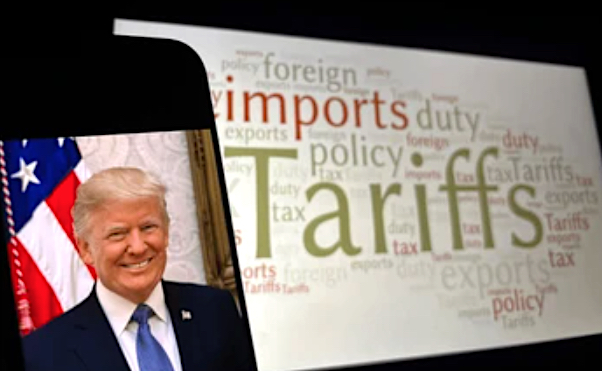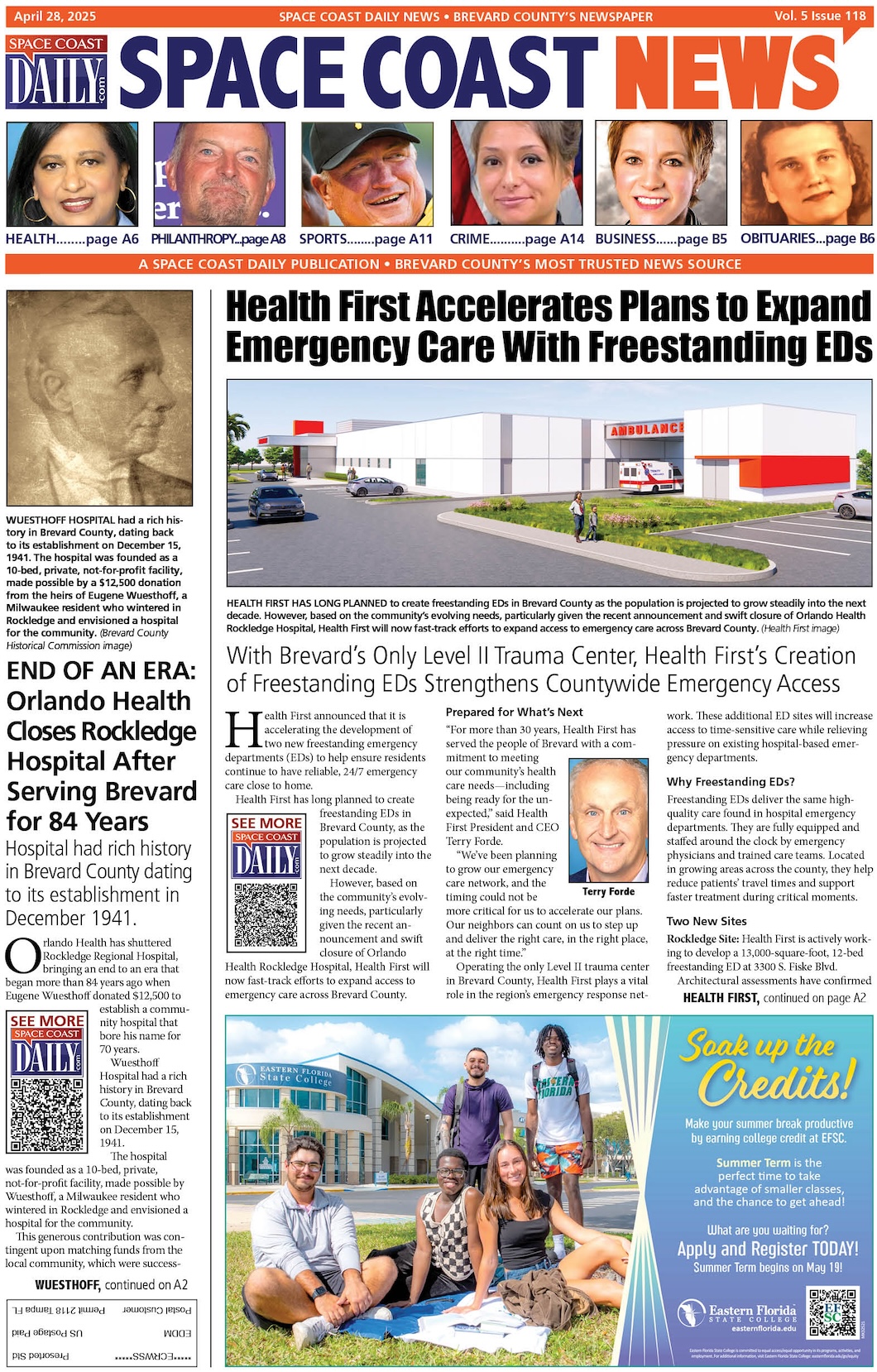YOUR VIEW: CFP Ilene Davis On Tariffs – The End of America or the Beginning of a ‘Reagan Repeat?’
By Ilene Davis, CFP // April 16, 2025
YOUR VIEW: CFP ILENE DAVIS

I still believe that America’s future is bright, and that our economy – AND AMERICANS – will continue to flourish.
Ever since I read the book One Second After, I’ve been concerned about an EMP as America becomes increasingly dependent on electronics. Then, when the Chinese balloon was allowed to fly across America, spending extra time at many of our military installations.
Maybe all the espionage novels I read (particularly the ones by Jack Carr, Tom Clancy, Brad Thor and Vince Flynn) have made me see places like China, Iran, and Russia as places that would like to see our country destroyed and it concerns me that both our national HEALTH and our national SECURITY, seem to be almost totally dependent on China.
A doctor friend told me he was totally astonished to learn that most of the ingredients for medications that many Americans depend on COME FROM CHINA!
We are only recently seeming to read news about how dependent OUR MILITARY is dependent on rare earth minerals that (hopefully only for now) a majority – COME FROM CHINA!
From what I’ve also read, America is self-sufficient in its ability to provide for our power and food needs. Some fruits and vegetables may come from other countries, but my guess is that if we stop paying farmers to NOT GROW stuff, America will be better off overall.
I don’t know about you, but I don’t think it’s worth putting our personal health and national security at risk to be able to buy cheap clothing, toys and other stuff. And keep in mind that during Trump’s first term, despite adding Tariffs on China and other countries, until COVID, America had some of the LOWEST INFLATION during some of the BEST ECONOMIC GROWTH.
That all said, here are my thoughts based on what I’ve said above, and what I’ve been reading:
Referring to the Worldometers.info chart below, the United States comprises 26% of the world’s GDP. If deals are worked out with Germany, Japan, and India, the combined total would be over 38% of the entire world economy.
Another website showed 15% of China’s exports come to the US. If that were cut in half by companies building what was previously imported from China (BTW, Nvidia just announced $500 BILLION of new factories/infrastructure to be invested in the U.S. over the next 5 years, with supercomputers to be mass-produced within 12-15 months. Plus I’ve read that something like $7 TRILLION has been committed by other companies to be invested in the U.S., providing jobs AND PRODUCTS THAT WERE PREVIOUSLY EXPORTED HERE to be manufactured in the U.S.
| # | Country | GDP (nominal, 2023) |
GDP (abbrev.) |
GDP Growth |
Population (2023) |
GDP per capita |
Share of World GDP |
|---|---|---|---|---|---|---|---|
| 1 | United States | $27,720,700,000,000 | $27.721 trillion | 2.89% | 343,477,335 | $80,706 | 26.11% |
| 2 | China | $17,794,800,000,000 | $17.795 trillion | 5.25% | 1,422,584,933 | $12,509 | 16.76% |
| 3 | Germany | $4,525,700,000,000 | $4.526 trillion | −0.27% | 84,548,231 | $53,528 | 4.26% |
| 4 | Japan | $4,204,490,000,000 | $4.204 trillion | 1.68% | 124,370,947 | $33,806 | 3.96% |
| 5 | India | $3,567,550,000,000 | $3.568 trillion | 8.15% | 1,438,069,596 | $2,481 | 3.36% |
From what I’ve been reading, in just the past week, over 100 countries have already called about offering to reduce THEIR tariffs – AND BARRIERS (like Australia not allowing US beef) on U.S. products. Remember, that makes AMERICAN PRODUCTS/SERVICES less expensive to customers in OTHER COUNTRIES. I’ve also read, and this to me may be the most interesting (though what I believe happened back in 2017-2019), is that other countries are BORROWING MONEY to loan/grant/subsidize companies in their countries TO BASICALLY OFFSET OUR TARIFFS.
Here is how I explained it to a client: Suppose China has a product that costs the company there $20, and they sell it to a company in the U.S. for $25. Now, suppose with the tariff, the price would be $30 to the U.S. customer. But instead, China subsidizes the product with $5, so now the effective “cost” to the Chinese company is $15, which means they can now just charge the US company $20, so with the $5 U.S. tariff, the cost would be right back at $25 to the U.S. company EVEN WITH THE TARIFF INCLUDED.
NET RESULT: OTHER COUNTRIES NOW INCREASE THEIR DEBT TO PAY TARIFFS THAT CAN REDUCE OUR DEBT.
I personally think that within the next 3 months, there will be more private sector American jobs that will help produce things customers want and need, that inflation will be moderate, and that most other countries will now make it more affordable for THEIR CITIZENS TO BUY AMERICAN PRODUCTS.
As always, this is just my personal opinion, and I could be totally wrong, but I’m open to hearing from any of you as well. Meanwhile, I continue to believe this has the potential for a “Reagan redo” before year-end.
ABOUT THE AUTHOR

Ilene Davis, a resident of Brevard County since 1971, is a Certified Financial Planner with a bachelor’s degree in Mathematics from the University of Michigan, a bachelor’s degree in Accounting from Rollins College, and a Master’s in Business Administration from Webster University.
Davis became a stockbroker in 1982, earned her designation as a Certified Financial Planner in 1984, and with a desire to serve clients more on her own terms, opened her own financial consultant office in Cocoa Village in 1986.
She has combined her professional and personal experience with keen financial insight and instinct into her first book, Wealthy By Choice: Choosing Your Way To A Wealthier Future, which was recently published by Tablet Publications of Cocoa Beach and is now available on Amazon.com, BarnesandNoble.com, TabletPublications.com and ChoosingWealth.com.
She is committed to helping each client create their own “Financial Freedom Fund,” and believes strongly in free market capitalism and a “hand up rather than a hand-out” as the best path to prosperity.
THE FOLLOWING DISCLAIMERS APPLY THROUGHOUT THIS ARTICLE:
■ Material discussed is meant for general illustration and / or information purposes only and is not to be construed as tax or legal advice. Although information has been gathered from sources believed to be reliable, please note that individual situations can vary. Therefore, the information should be relied upon only when coordinated with individual professional advice.
■ The views expressed are not necessarily the opinion of Osaic Wealth, Inc., and should not be construed directly or indirectly as an offer to buy or sell any securities. Investing is subject to risks including loss of principal invested. No strategy can assure a profit nor protect against loss.
■ Any calculated figures quoted are for ILLUSTRATIVE PURPOSES ONLY and are not necessarily indicative of past or future performance of any specific investment. They do not include the time value of money, taxes, inflation, or fluctuations in principal. Included in this newsletter are hypothetical examples of various approaches that can be taken to assist clients with their insurance and financial planning needs. The results depicted within this newsletter are unique to the hypothetical cases presented and should not be construed as a guarantee of future results. For illustrative purposes only. Not indicative of any specific investment product. Material discussed does not reflect investment fees or expenses and if deducted, performance would be reduced. These examples are for illustrative purposes only and do not represent performance of any specific investment.
■ Investing involves risk including the potential loss of principal. No investment strategy can guarantee a profit or protect against loss in periods of declining values. Past performance is no guarantee of future results. Please note that individual situations can vary and some strategies may not be suitable for all investors. Therefore, the information presented here should only be relied upon when coordinated with individual professional advice.
■ Any links in this material are provided as a convenience and for informational purposes only. The links are not part of the Osaic Wealth, Inc. website. Osaic Wealth, Inc. does not endorse or accept any responsibility for the content or use of the website nor guarantee the accuracy or completeness of the data or other information appearing on the linked pages. The company assumes no liability for any inaccuracies, errors, or omissions in or from any data or other information provided on the pages or for any actions taken in reliance on any such data or information.
■ Indexes – including the DJIA, S&P500 (an unmanaged stock index. S&P 500 is a registered trademark of the Standard and Poors Corporation), Russell 2000® Index (measures the performance of the 2,000 smallest companies in the Russell 3000 index, which represents approximately 8% of the total market capitalization of the Russell 3000 Index), MSCI-EAFE (Morgan Stanley Capital International Europe, Australia and Far East) Index (is widely recognized benchmark of non-US stock markets. It is an unmanaged index composed of a sample of companies representative of the market structure of 20 European and Pacific Basin countries and includes reinvestment of all dividends), etc are hypothetical portfolios of specific securities, the performance of which is often used as a benchmark in judging the relative performance of certain asset classes. Compared with securities with similar investment characteristics and criteria. Indexes cannot be invested in directly, are unmanaged and do not incur management fees, costs and expenses. Past performance is not indicative of future results.












